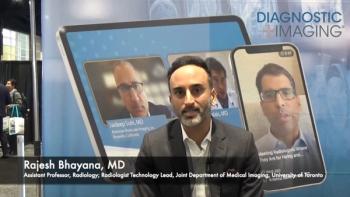
Early PET/CT Can Help Predict Treatment Response, Survival of Patients with Liver Cancer
Patients with hepatocellular carcinoma may benefit from early PET/CT imaging after transarterial radioembolization to predict treatment response and survival, a new study found.
Early PET/CT imaging after transarterial radioembolization (TARE) for liver cancer could identify early who will respond to treatment and inform further treatment steps, a new study in France found.
The single-center retrospective study, published in
“Early posttreatment evaluation with PET/CT could help more reliably identify true nonresponders after TARE, which in turn could prompt early adapted therapeutic management,” the study authors, led by Edouard Reizine, MD, of Henri-Mondor University Hospital in Créteil, France, wrote.s
The study included 37 patients with HCC treated by TARE at Henri-Mondor University Hospital in Créteil, France, between February 2016 and August 2018. Those with portal vein tumor invasion or invasion or with unifocal or multifocal HCC not eligible for local therapies or transarterial chemoembolization (TACE) were included. Mean age was 67 and the majority (34) were men. FDG PET/CT and 18F-FCH PET/CT examinations were performed before treatment and 4 to 8 weeks after treatment.
Treatment response was assessed using modified response evaluation criteria in solid tumors (mRECIST).
“In patients with HCC treated by TARE, early posttreatment PET/CT response exhibited 100% sensitivity and 100% specificity for six-month mRECIST response, in comparison with 67% sensitivity and 100% specificity of one-month mRECIST response; early postteatment PET/CT response was also a significant independent predictor of OS (HR: 0.24, 95% CI: 0.08-0.76, P =.01),” the authors wrote.
On the PET/CT before treatment, 28 (76%) patients were FDG-positive, 15 (41%) FCH-positive 6 (16%) both FDG-positive and FCH-positive.
At one month after treatment, 12 of 28 (42.9%) FDG-positive HCCs exhibited early response by FDG PET/CT; and 7 of 15 (46.7%) FCH-positive HCCs exhibited early response by 18F-FCH PET/CT. At six months, 12 (52%) patients exhibited mRECIST response.
“Given the high percentage of HCCs that were FDG-positive, metabolic evaluation before and after TARE could be conducted by FDG alone in the large majority of patients,” the authors wrote. “Nonetheless, performing pretreatment PET/CT with both FDG and 18F-FCH helps detect additional HCCs not identified by conventional imaging, and the combination of the two tracers achieves very high sensitivity for HCC detection. Hence, imaging using both radiotracers may maximize the number of patients with HCC who benefit from metabolic evaluation.”
Limitations of the study include that it was retrospective, included only 37 participants out of 73 patients, and participants received a range of additional treatments after TARE. The authors also noted that 18F-FCH is not readily available.
The 5-year survival rate for HCC, which is the leading cause of liver cancer deaths,
Predicting how patients will respond to treatment has been a focus of providers. One
Another
Newsletter
Stay at the forefront of radiology with the Diagnostic Imaging newsletter, delivering the latest news, clinical insights, and imaging advancements for today’s radiologists.




























